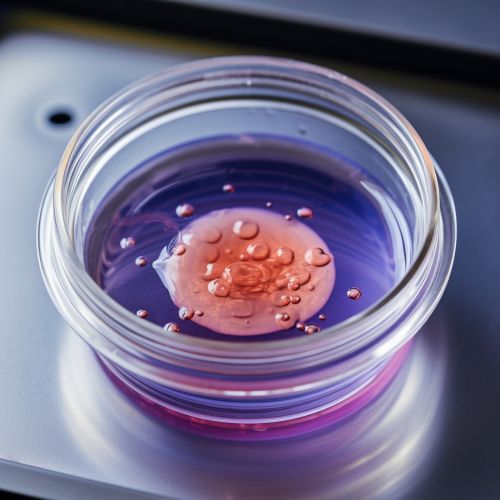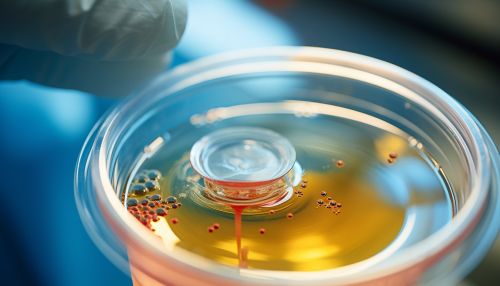Sputum culture
Introduction
A Sputum culture is a microbiological test performed in a laboratory that aims to identify and quantify the bacteria or fungi present in a patient's sputum. This test is commonly used in the diagnosis of respiratory infections, such as pneumonia, bronchitis, and tuberculosis. It can also be used to monitor the effectiveness of treatment and to detect the presence of antibiotic-resistant organisms.


Collection of Sputum Sample
The first step in a sputum culture is the collection of a sputum sample. This is typically done by having the patient cough up sputum from deep within the lungs. The sample should be collected in a sterile container to prevent contamination. It is important that the sample is not contaminated with saliva or nasal secretions, as these can interfere with the results of the culture.
Processing of Sputum Sample
Once the sputum sample is collected, it is sent to the laboratory for processing. The sample is first treated with a chemical solution to liquefy it and kill any normal flora present. This process, known as decontamination, helps to ensure that the bacteria or fungi being cultured are those causing the patient's infection and not just normal inhabitants of the respiratory tract.
After decontamination, the sample is stained using a technique called Gram staining, which allows the laboratory technician to identify the general type of bacteria present based on their shape and color. The sample is then cultured on a special medium that encourages the growth of bacteria or fungi.
Culture and Identification
The cultured sample is incubated at a specific temperature for a certain period of time, usually 24 to 48 hours. During this time, the bacteria or fungi present in the sample multiply, forming visible colonies on the culture medium.
The colonies are then examined under a microscope and further tests are performed to identify the specific type of bacteria or fungi present. These tests may include biochemical tests, such as the catalase test or the coagulase test, and molecular tests, such as polymerase chain reaction (PCR).
If the sputum culture is positive, meaning that bacteria or fungi are present, the laboratory will also perform a susceptibility test to determine which antibiotics the organisms are sensitive or resistant to. This information is crucial in guiding the choice of treatment.
Interpretation of Results
The results of a sputum culture are typically reported as the type of bacteria or fungi identified and their susceptibility to various antibiotics. A negative culture means that no bacteria or fungi were found in the sample. This could mean that the patient does not have a bacterial or fungal infection, or it could mean that the sample was not collected or processed correctly.
It is important to note that the results of a sputum culture should always be interpreted in the context of the patient's clinical condition and other diagnostic tests. For example, a positive culture for Streptococcus pneumoniae in a patient with symptoms of pneumonia would strongly suggest that this organism is the cause of the infection. However, the same result in a patient without symptoms could simply indicate colonization of the respiratory tract.
Limitations and Challenges
While sputum culture is a valuable tool in the diagnosis of respiratory infections, it has several limitations. One of the main challenges is obtaining a good quality sputum sample. Many patients have difficulty producing sputum, especially children and elderly individuals. In addition, the sample can easily be contaminated with saliva or nasal secretions, which can lead to false-positive results.
Another limitation is the time required for culture and identification. It can take several days to obtain the results of a sputum culture, which can delay the initiation of appropriate treatment. Furthermore, some bacteria and fungi are difficult to grow in culture, and some may not be detected by standard culture methods.
Despite these challenges, sputum culture remains a cornerstone in the diagnosis of respiratory infections. Advances in molecular techniques, such as PCR and next-generation sequencing, are expected to improve the speed and accuracy of sputum culture in the future.
